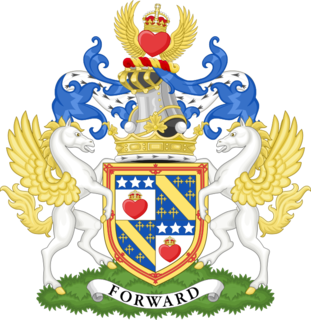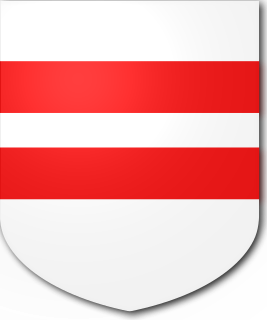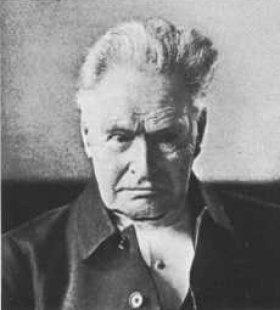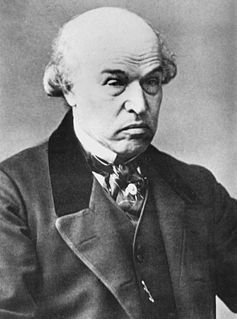
Marquess of Queensberry is a title in the Peerage of Scotland. The title has been held since its creation in 1682 by a member of the Douglas family. The Marquesses also held the title of Duke of Queensberry from 1684 to 1810, when it was inherited by the Duke of Buccleuch.

Earl of Rosse is a title that has been created twice in the Peerage of Ireland, both times for the Parsons family.

Viscount Thurso, of Ulbster in the County of Caithness, is a title in the Peerage of the United Kingdom. It was created on 11 June 1952 for the Scottish Liberal politician and former Secretary of State for Air, Sir Archibald Sinclair, 4th Baronet. His son, the second Viscount, served as Lord Lieutenant of Caithness from 1973 to 1995. As of 2016 the titles are held by the latter's son, the third Viscount, who succeeded in 1995. Known as John Thurso, he is a Liberal Democrat politician. Thurso lost his seat in the House of Lords after the passing of the House of Lords Act 1999. However, he was elected to the House of Commons in 2001, thereby becoming the first hereditary peer of the United Kingdom allowed to sit in the Commons without first disclaiming his title, he held his seat until his defeat in the 2015 general election. On 19 April 2016, he re-entered the Lords following his election by the remaining Liberal Democrat hereditary peers after the death of Lord Avebury. The third Viscount also became Lord Lieutenant of Caithness in 2017.

Baron Farnham, of Farnham in the County of Cavan, is a title in the Peerage of Ireland. It was created in 1756 for John Maxwell, who had previously represented Cavan Borough in the Irish House of Commons. John Maxwell's son, the second Baron, was created Viscount Farnham in 1760 and Earl of Farnham in 1763. Both titles were in the Peerage of Ireland but became extinct when he died childless in 1779. His brother and successor, the third Baron, was again created Viscount Farnham in 1781 and Earl of Farnham in 1785. These titles were also in the Peerage of Ireland. His son, the second Earl, sat in the House of Lords as an Irish Representative Peer from 1816 to 1823. However, he had no children and on his death in 1823 the viscountcy and earldom became extinct.

Baron Muskerry is a title in the Peerage of Ireland. It was created in 1781 for Sir Robert Deane, 6th Baronet. He had previously represented County Cork in the Irish House of Commons.

Baron Grimthorpe, of Grimthorpe in the East Riding of the County of York, is a title in the Peerage of the United Kingdom. It was created on 17 February 1886 for the lawyer and architect Edmund Beckett, 1st Baron Grimthorpe, 5th Baronet Beckett, with remainder to the heirs male of his father. He was succeeded according to the special remainder by his nephew, the second Baron. He had earlier represented Grimsby in Parliament. As of 2014 the titles are held by the latter's great-grandson, the fifth Baron, who succeeded his father in 2003.
Baron Moncreiff, of Tulliebole in the County of Kinross, is a title in the Peerage of the United Kingdom. It was created on 9 January 1874 for the lawyer and Liberal politician Sir James Moncreiff, 1st Baronet. He had already been created a Baronet, of Kilduff in the County of Kinross, in the Baronetage of the United Kingdom on 23 May 1871. In 1883 Lord Moncreiff also succeeded his elder brother as 11th Baronet, of Moncreiff in the County of Perth. On his death the titles passed to his eldest son, the second Baron. He was a Judge of the Court of Session from 1888 to 1905 under the title of Lord Wellwood and served as Lord Lieutenant of Kinross-shire between 1901 and 1909. He was succeeded by his younger brother, the third Baron. He was a clergyman. As of 2010 the titles are held by the latter's great-grandson, the sixth Baron, who succeeded his father in 2002.

Sir William Jenner, 1st Baronet, GCB, QHP, FRCP, FRS was a significant English physician primarily known for having discovered the distinction between typhus and typhoid.
There has been a Lord Lieutenant of Buckinghamshire almost continuously since the position was created by King Henry VIII in 1535. The only exception to this was the English Civil War and English Interregnum between 1643 and 1660 when there was no king to support the Lieutenancy. The following list consists of all known holders of the position: earlier records have been lost and so a complete list is not possible. Since 1702, all Lord Lieutenants have also been Custos Rotulorum of Buckinghamshire.
Baron Harvey of Tasburgh, of Tasburgh in the County of Norfolk, is a title in the Peerage of the United Kingdom. It was created on 3 July 1954 for the diplomat Sir Oliver Harvey on his retirement as British Ambassador to France. In November the same year he also succeeded his half-brother as fourth Baronet of Crown Point.

There have been three baronetcies created for persons with the surname Croft, one in the Baronetage of England and two in the Baronetage of the United Kingdom. All three creations are extant as of 2008.

There have been four baronetcies created for persons with the surname Sykes, two in the Baronetage of Great Britain and two in the Baronetage of the United Kingdom. Three of the creations are extant as of 2008.
The Douglas of Glenbervie, Kincardine Baronetcy was created on 28 May 1625 in the Baronetage of Nova Scotia.

There have been four baronetcies created for persons with the surname Miller, two in the Baronetage of England, one in the Baronetage of Great Britain and one in the Baronetage of the United Kingdom. Two of the creations are extant as of 2008.
The Chance Baronetcy, of Grand Avenue in the parish of Hove in the County of Sussex, is a title in the Baronetage of the United Kingdom. It was created on 19 June 1900 for James Timmins Chance, a grandson of William Chance one of the Chance brothers who started the family business in 1771. He became head of Chance Brothers and Company. He was High Sheriff of Staffordshire in 1868.
There have been seven baronetcies created for persons with the surname Lawrence, one in the Baronetage of England, one in the Baronetage of Great Britain and five in the Baronetage of the United Kingdom.
There have been two Cook Baronetcies. This first was created in the Baronetage of England in 1663 and went extinct in 1708. The second was created in the Baronetage of the United Kingdom in the 19th century and is extant.
The Epidemiological Society of London, also known as the Royal Society of Medicine's Epidemiological Society, was founded in London in 1850 with the objective of investigating the causes and conditions which influence the origin, propagation, mitigation, and prevention of epidemic disease. The society became a part of the Royal Society of Medicine in 1907.
The Clinical Society of London was founded in London in 1868 and merged in 1907 with the Royal Society of Medicine.











